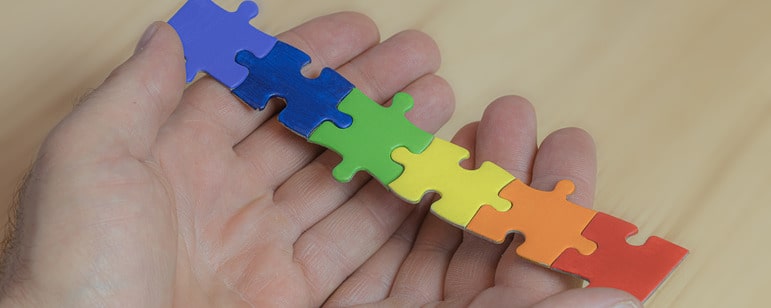Traditionally, business leaders have focused on the basic categories of diversity, which include race, gender, age, ethnicity, nationality, and religion. While these types of diversity are important components of understanding and supporting your workforce, it’s wise to be aware of all the different types of diversity.
Here’s a look at several examples of diversity, including both traditional and less well-known categories.
Race
According to the National Human Genome Research Institute, race is “a social construct used to group people.” Understanding the racial composition of your workforce can help you cultivate a more diverse and inclusive business culture. Bringing in individuals from a wide range of backgrounds can offer fresh perspectives on business challenges and promote long-term growth.
Gender
Gender represents another one of the foundational types of diversity. However, the concept of gender has evolved, as the term includes employees who identify as men, women, non-binary, transgender, or other genders. Whether you manage your own talent or work with a resource solutions organization, it’s beneficial to adapt your hiring and retention policies to promote gender inclusivity.
Neurodiversity
One of the emerging categories of diversity recognizes that everyone has a unique way of thinking. Business leaders should have policies that support and include individuals who have ADHD, autism, or other thought-process disorders.
Age
Each generation of workers has a different set of life experiences, values, and priorities. These differences provide opportunities for varied perspectives and knowledge share that will help your organization thrive.
Socioeconomic Status
Composing a team of people from different economic backgrounds can provide your company with a range of worldviews and perspectives. However, individuals from different socioeconomic backgrounds might also experience tension. Therefore, you must ensure that all people feel respected and supported.
Sexual Orientation
Not everyone identifies as a heterosexual or “straight” person. Other sexual orientations to be aware of include:
- Gay
- Lesbian
- Pansexual
- Queer
- Bisexual
- Sexually fluid
Be careful not to assume the gender of someone’s life partner. In fact, you shouldn’t make assumptions about a person’s relationship status in general.
Disability and Accessibility
Physically disabled employees, especially those with mobility issues, represent an important segment of your workforce. Make sure that your organization complies with the ADA and other relevant legislation so that mobility-impaired people have access to the same infrastructure as non-impaired people.
Religion
Spiritual preferences are the various religious beliefs and practices that people participate in. These belief systems influence everything from how someone approaches daily tasks to their personal habits. If your workforce possesses a mix of ideologies, it may promote creativity and open-mindedness.
Personal and Recreational Habits
Personal habits include everything from someone’s dietary preferences to when they work best. Recognizing and, when possible, supporting each team member’s habits will empower them to be more productive. Likewise, it’s beneficial to be mindful of recreational habits and activities, as these represent bonding opportunities for your workforce.
Appearance
Unless your business has a uniform policy, not everyone will show up to work wearing the same outfit. Even if uniforms are required, some people may wear unique jewelry, prefer different shoes, or have more dynamic hairstyles. Where possible, give your team the latitude to follow their preferences, as doing so will make them more comfortable and productive.
Parental Status
While all types of diversity matter, parental status represents one of the categories that can have a profound impact on an employee’s productivity and job satisfaction. Workers with children often want flexibility so they can take their kids to school, attend important functions, and fulfill their familial responsibilities. Accommodating their needs will promote loyalty and help you retain top staff.
Marital Status
Speaking of relationships, it’s important to consider how someone’s relationship status influences their decision-making, needs, and behavior. People in serious partnerships often have broader support systems, but they may also face more external stressors.
Make Everyone Feel Valued
Embracing employees from many different backgrounds and situations will help you create a dynamic, innovative, and competitive workplace. By recognizing and valuing the unique contributions of each individual, you can help your business foster an environment of growth, learning, and mutual respect.







